What, where, and why to post?
Figuring out what content to post, on which platform, is not an easy job.
With time, content has come to grow and mold itself in multiple shapes and forms.
Different platforms, different content types, and different audiences with their own preferences for content leave social media marketers and strategists wondering “What, where, and why to post?”.
And, as always, research is the key.
This article serves as a shortcut to navigate through all the different types of social media content out there, various social media content examples, what and why works on which platform, and how to figure out what content types drive engagement for your audience.
18 top content types in social media
- Short-form video
- Images
- Carousel
- Memes
- Gifs
- Text-based content
- Live video
- User-generated content
- Long-form video
- Shared URLs
- Influencer collaborations
- Infographics
- Polls
- Podcasts
- Customer testimonials
- Guides
- Industry research & findings
- Giveaways & contests
How to find what content types drive engagement for your audience
Let's start with the basics.
If you are still not sure what social media content is, think of it as the bread and butter of our online existence.
It's the selfies you take, the memes you laugh at, the articles you share, and even the comments you leave behind like digital footprints.
Social media content types can be as diverse as the users who populate these platforms, each piece reflecting a unique aspect of our life and creativity.
As we dive into the kaleidoscope of content types, keep in mind that each serves its purpose, whether to inform, entertain, inspire, or provoke thought.
So, buckle up, and let’s get rolling!
1. Short-form video
Short-form video content refers to video posts with a length between 5 to 90 seconds and it is one of the most popular types of content.
Platforms like TikTok, Instagram, and Snapchat are based on this type of content, and it’s no secret that short-form video has been king of content for a while now, due to its high retention and engagement rates.
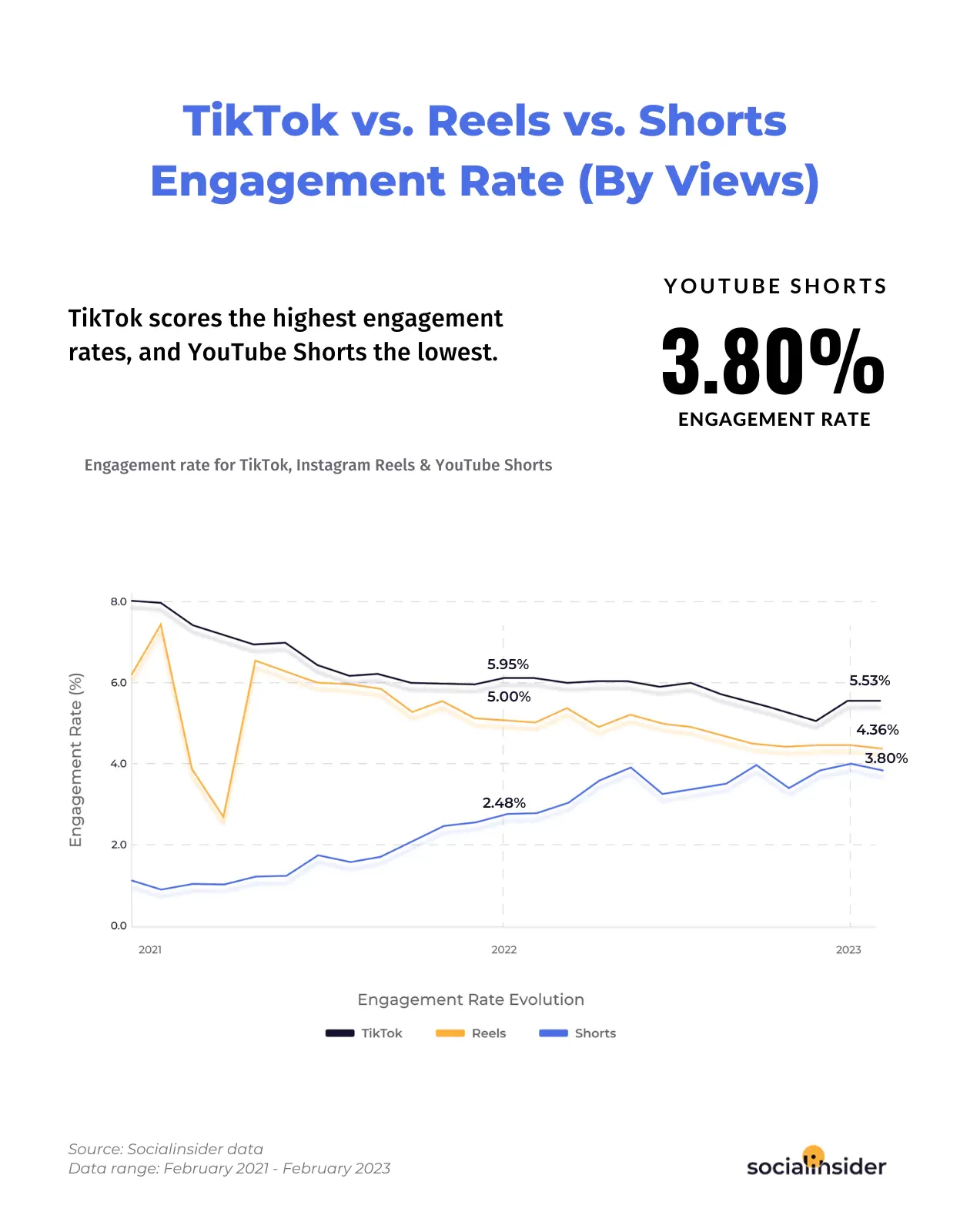
According to Socialinsider's short-form analysis, TikTok scores the highest engagement rates, and YouTube shorts the lowest.
Depending on what works best for your audience and what aligns with your brand tone of voice, there are multiple types of short-form video you can experiment with.
Here are some examples of social media content:
- Inspirational/educational videos - how-tos, product tutorials, product features
- FAQs – responding to customer questions
- Funny videos with discrete brand placement
- User-generated-content
- Behind-the-scenes videos
- Teasers for upcoming events or releases
- Reviews & customer testimonials
- Highlights of past events
- Industry trends
- Influencer collaboration
Whatever you choose, make sure it reflects your brand’s originality and authenticity.
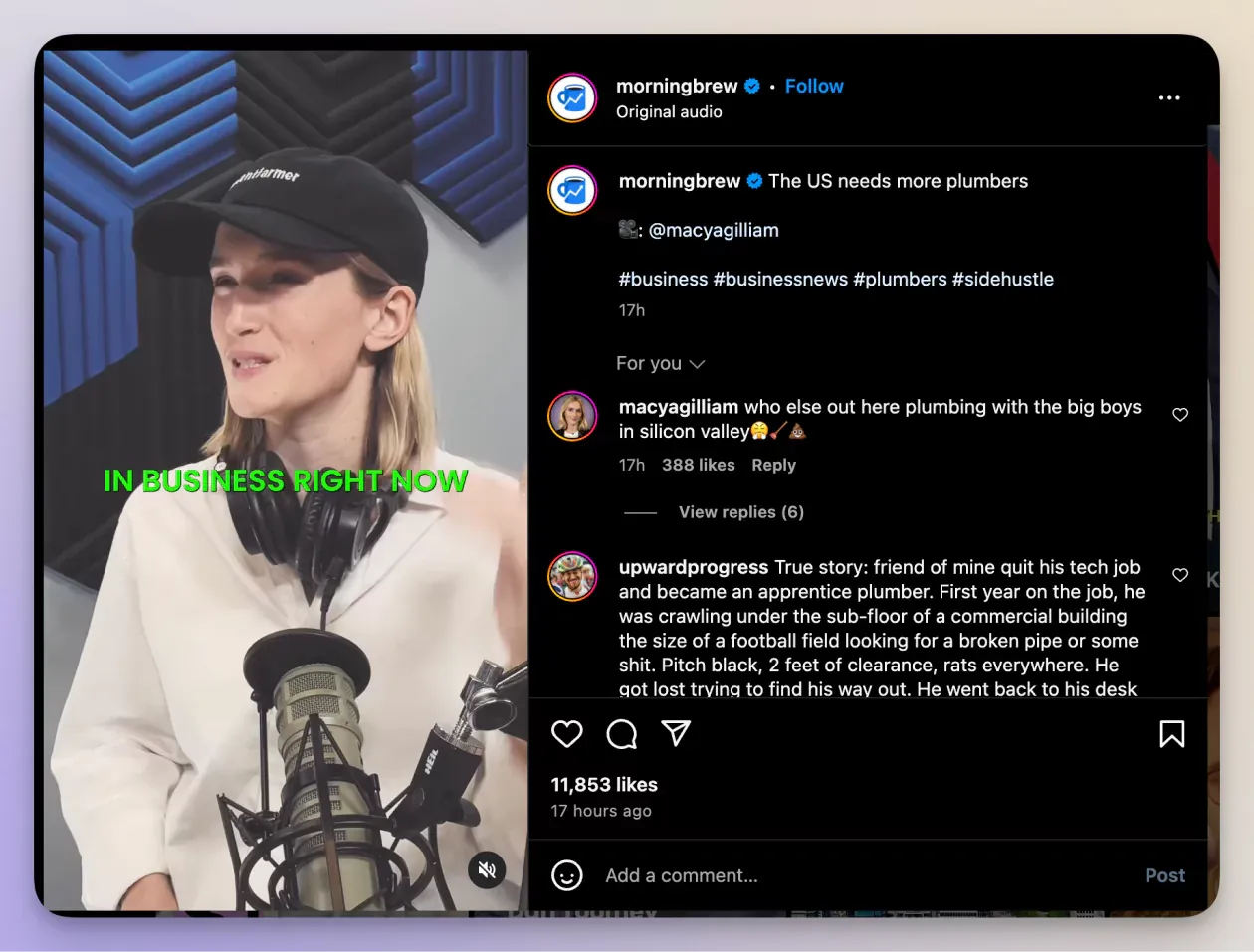
Take for example Morning Brew’s witty way of creating short-form news-related content that earned them over 1.4 million Instagram followers who share their sense of humor.
2. Images
Social media images are still going strong, contrary to what some users say.
Actually, images are the most used type of content for social media platforms.
According to this study, users share 6.9 billion images on WhatsApp per day, 3.8 billion on Snapchat, 2.1 billion on Facebook, and 1.3 billion on Instagram.
So if you are still unsure about what types of content to post on social media, I am here to reassure you that you can never go wrong with the OG of content - images.
Here is an Instagram post example from Doritos, to make your day extra spicy and inspiring.

3. Carousel / Multi-image posts
Social media carousels have been with us since 2015 when Instagram first rolled out the feature of posting images and videos at the same time.
Today, carousels are omnipresent on platforms like Facebook, Instagram, Pinterest, Linkedin, and Tiktok, and whether you are using them to show off infographics, product features, or re-create Tumblr aesthetics, carousels are one of the most popular social media content out there.
Let’s take a closer look at some carousel social content examples:
- How-tos and guides
- Product showcasing
- Highlight expertise or services
- Benchmarks and industry data
Here’s an example of how Sociainsider used carousels to showcase brand insights from the Superbowl, indirectly demonstrating expertise through their Instagram social listening tool:
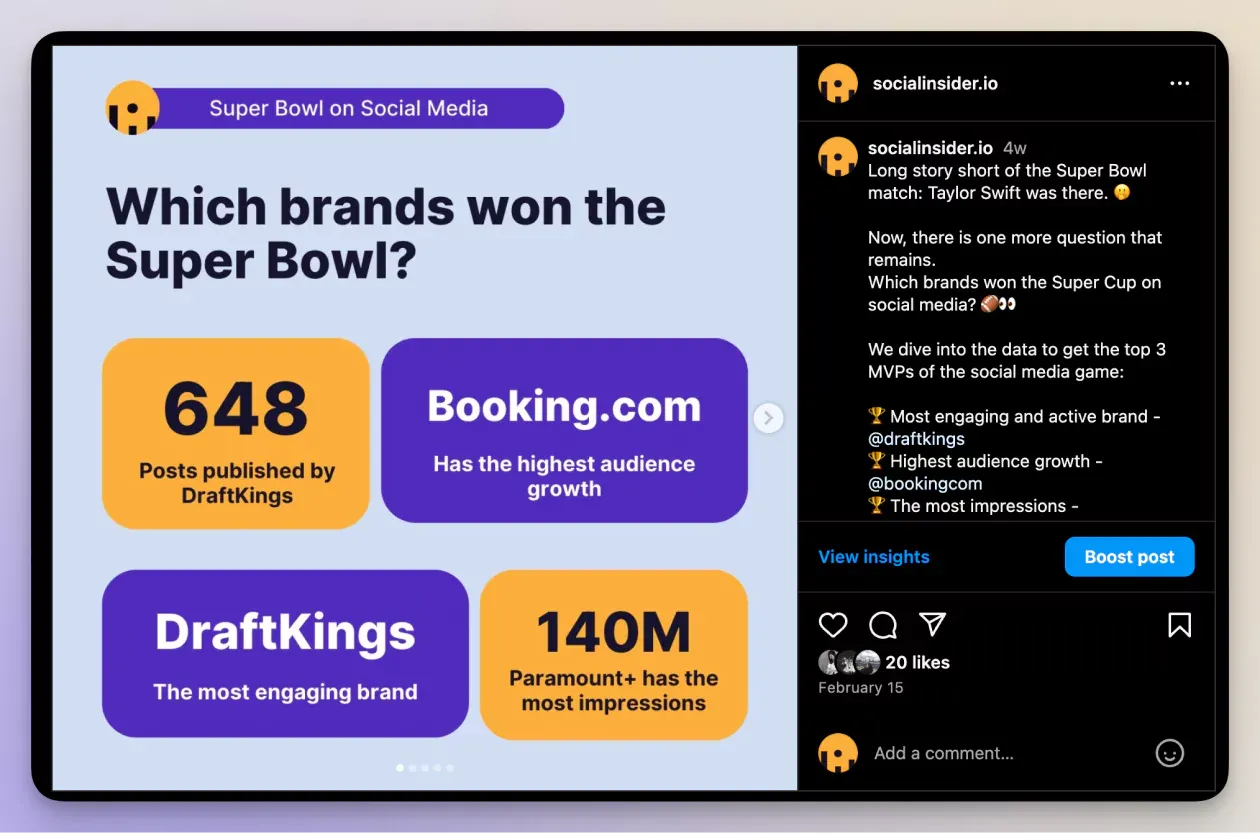
4. Memes
Memes have been around before the internet.
Yes, the term was first coined by Richard Dawkins in his 1976 book, “The Selfish Gene”. Taking linguistics Professor Kirby Conrod’s theory about memes and their self-replicating nature, one could argue that in order to aim for virality, any social media account has the right to try to create share-worthy memes.
Maybe they replicate, maybe they don’t.
The important thing is to give it a try, especially in today’s pop-culture era, where every event can be turned into a trending, ephemeral roast.
I think Semrush did a great job with their Usher and Alicia Keys Superbowl meme, directed at their target audience - marketing professionals.
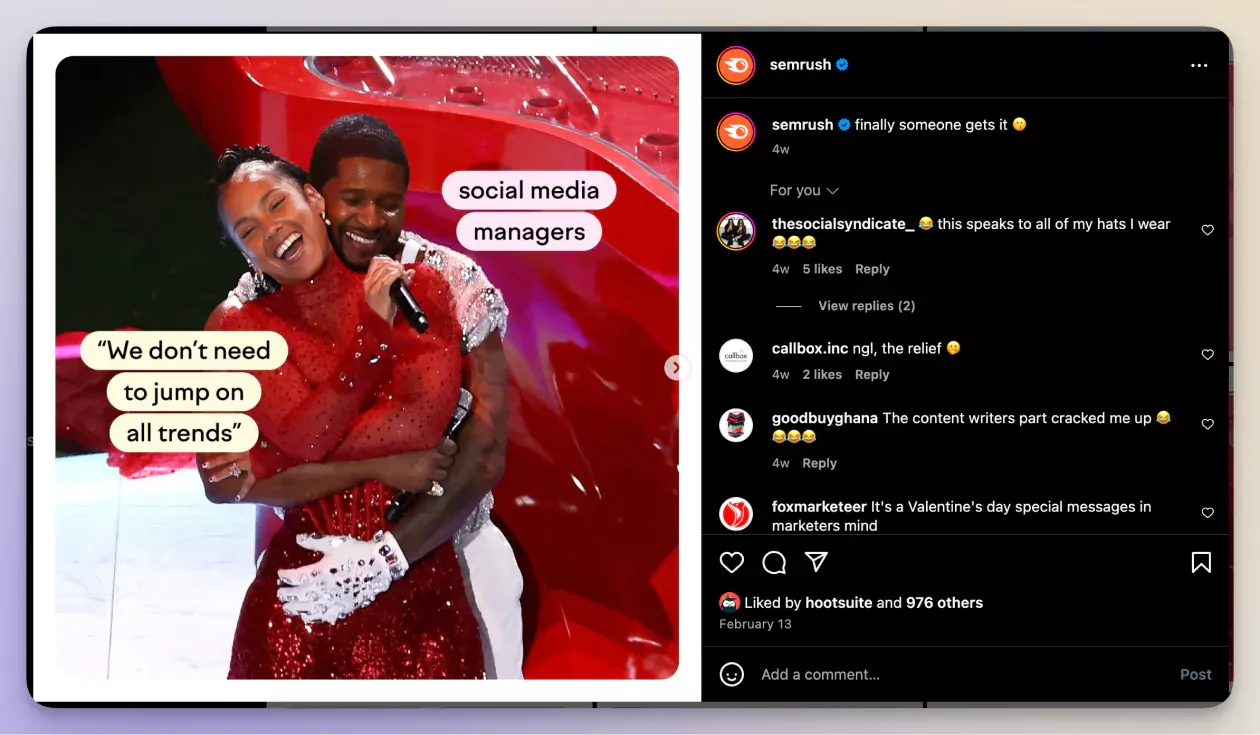
5. GIFs
Yet another internet marvel, invented before social media was born - the GIF (Graphics Interchange Format).
Although nobody is sure exactly how to pronounce it, the GIF was invented in 1987, as a solution to image file sharing at its lowest bit rate. GIF images were kind of forgotten, until around 2015 when Twitter (X now) and Imgur viralised them into what they are today - a simple form of expressing emotions through humorous, complex file compression.
Nowadays, platforms like Facebook, Instagram, X (Twitter), Facebook Messenger, and even WhatsApp support GIFs as a form of communication, and users love them!
Salesforce knows this and uses this type of social media content to connect and engage with its target audience, in a personal, amusing manner.
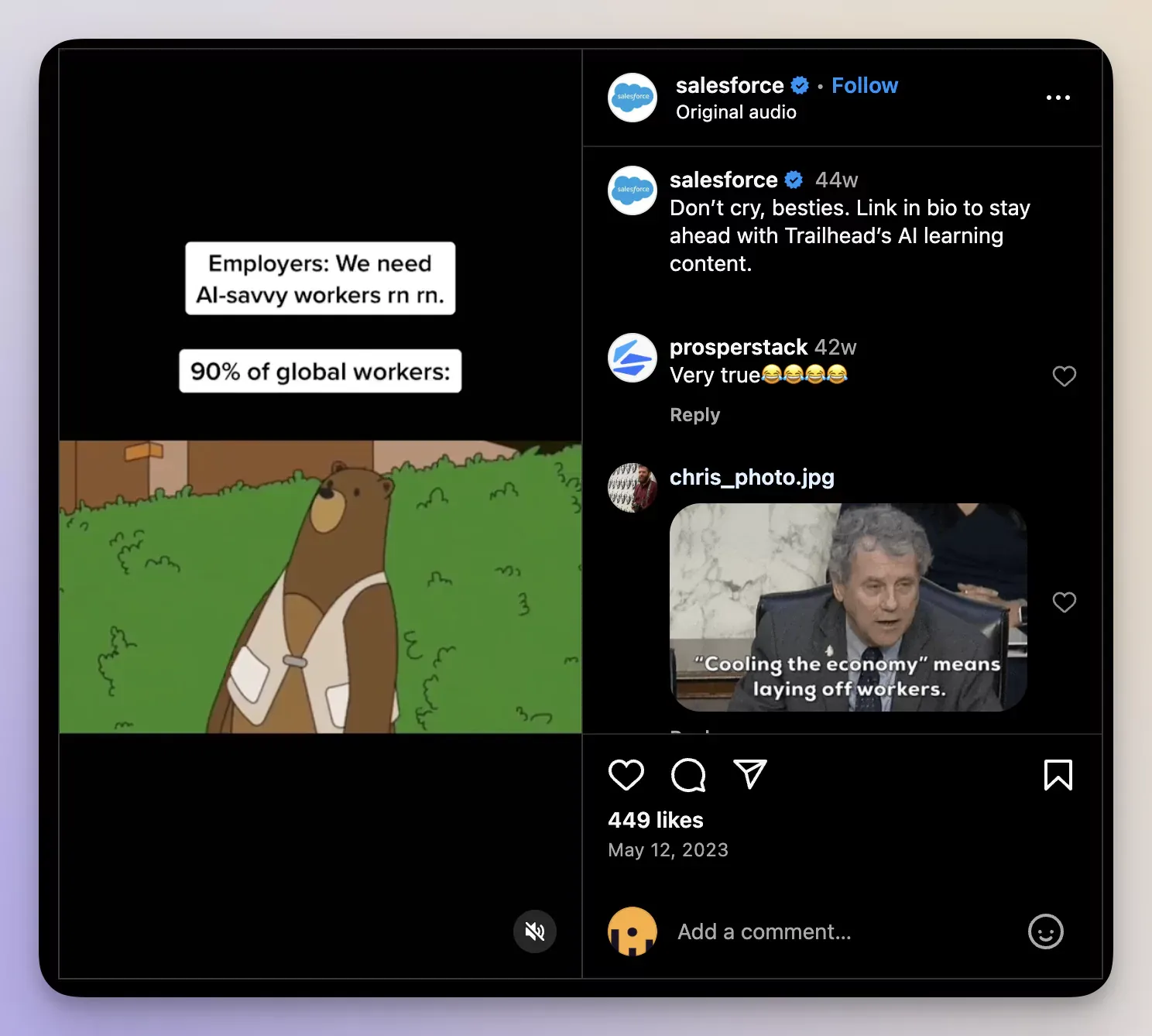
6. Text-based content
Although most social media platforms are predominantly visual, there are still some social media channels that encourage good-old text-based content, also known as microblogging. I am talking X (Twitter), Linkedin, Threads.
The value?
Text-based social media content will always cover the most important aspects of sharing content:
- it can easily get the message through
- it is accessible, easy to upload, universal
- it adds SEO value, due to its high indexing rate.
Businesses like Monzo Bank and Hubspot have dropped the other types of social media content, and kept it simple, with a majority of text-based content, especially on their LinkedIn pages.
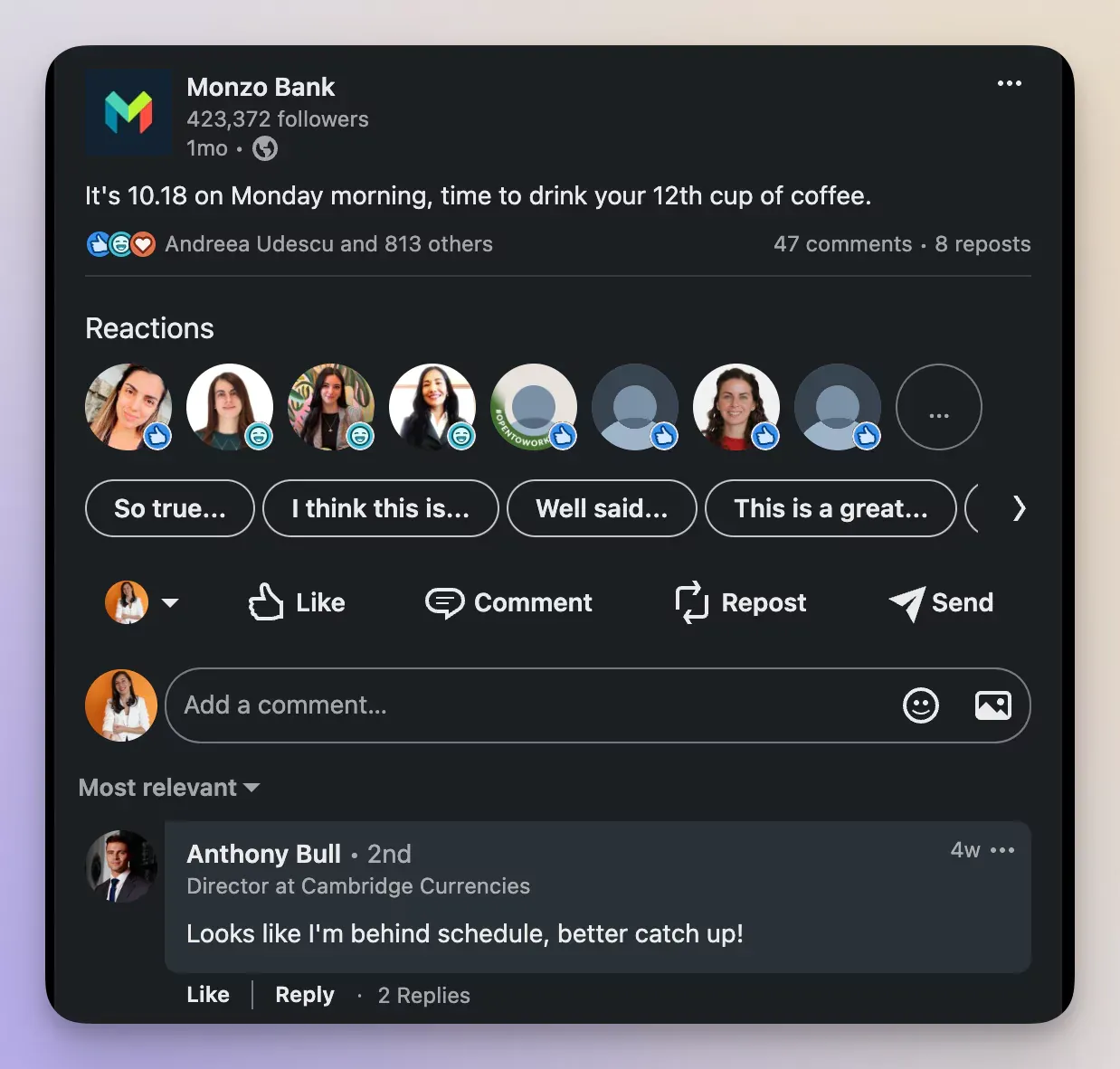
7. Live video
Whether it’s live streaming events on LinkedIn, live streaming Q&As on Youtube, live sessions on Instagram, game streaming on Twitch, or even live shopping on TikTok, the value of this type of social media content is incontestable.
Out of all content categories for social media, live video allows direct audience engagement, creates a sense of intimacy, facilitates partnerships with brands and influencers, and helps imprint a more memorable experience for the audience.
Additionally, live videos make for great social media content, once repurposed. Imagine how many short-form videos and posts you can take out of one hour of live streaming.
A great example of using live videos to connect with the audience is the Social Media Examiner.
They use live videos on LinkedIn to share industry news and get better insights into their audience’s needs.
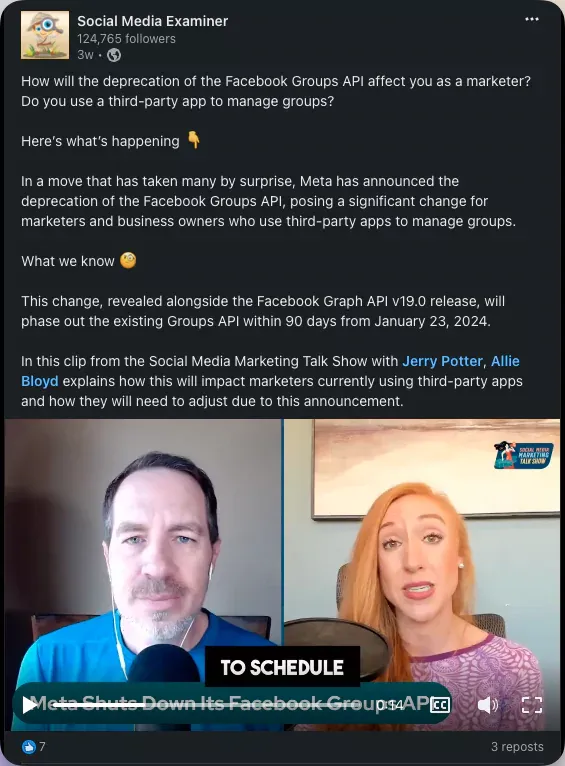
8. User-generated content
User-generated videos on YouTube receive 10 times more views than brand-produced videos.
According to Social Media Today, incorporating user-generated content on your website can lead to a 50% increase in brand organic search traffic.
UGC is one of the most underrated types of social media posts, due to its authentic nature, it creates high value, with low investment.
Take for example how Chipotle, known for its popularity among millennials and Gen Z, launched the #ChipotleLidFlip TikTok challenge in collaboration with popular content creator David Dobrik. The challenge went viral, resulting in hundreds of user-generated TikTok videos.
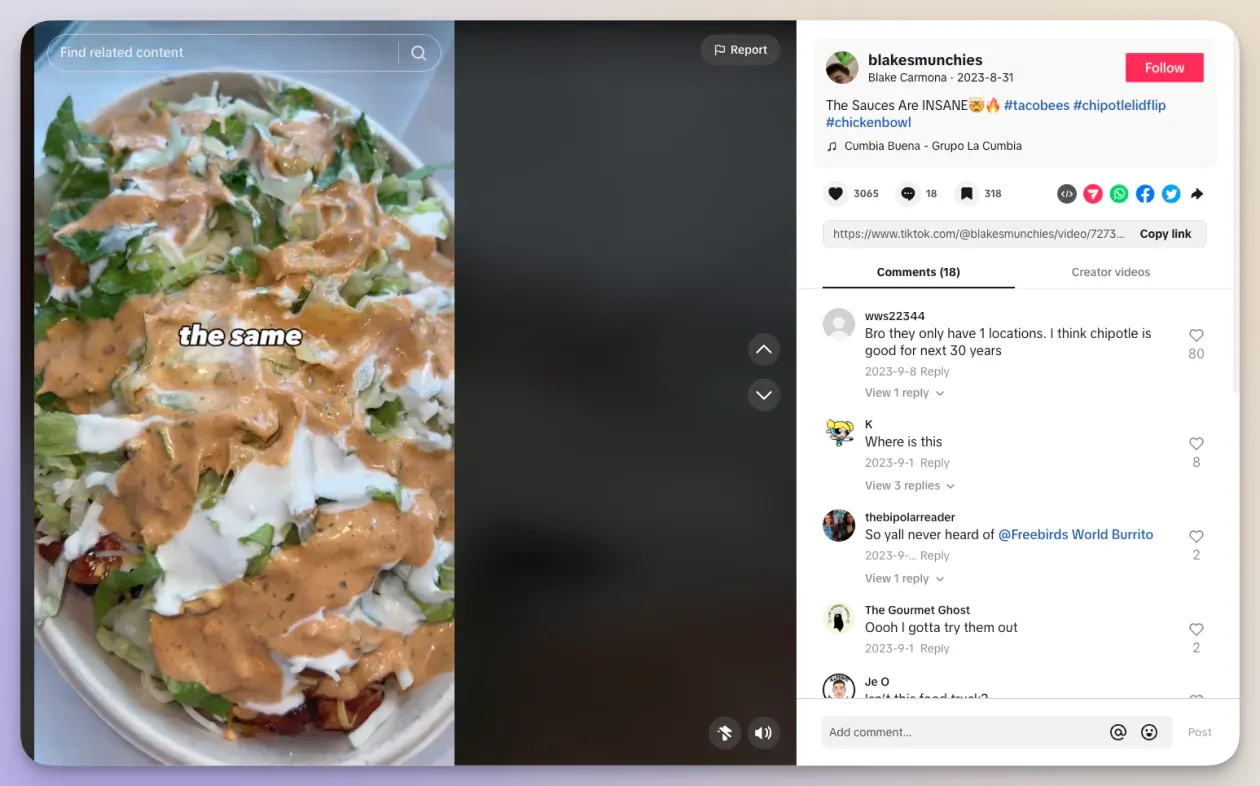
9. Long-form video
Podcasts, interviews, vlogs, or even TikTok 10 min videos. Long live the long-form video!
It is one of the best social media content, due to its high value and multiple repurposing qualities.
Long-form video means creators and brands have more room to tell their stories, educate their audience, and nurture meaningful connections.
YouTube is still the king of long-form video, also due to its high SEO capacity, it is becoming the go-to platform for how-tos, entertainment, and reviews.
Tasty is a great example of how creative, viral long-form content on YouTube, targets audiences from all age categories.
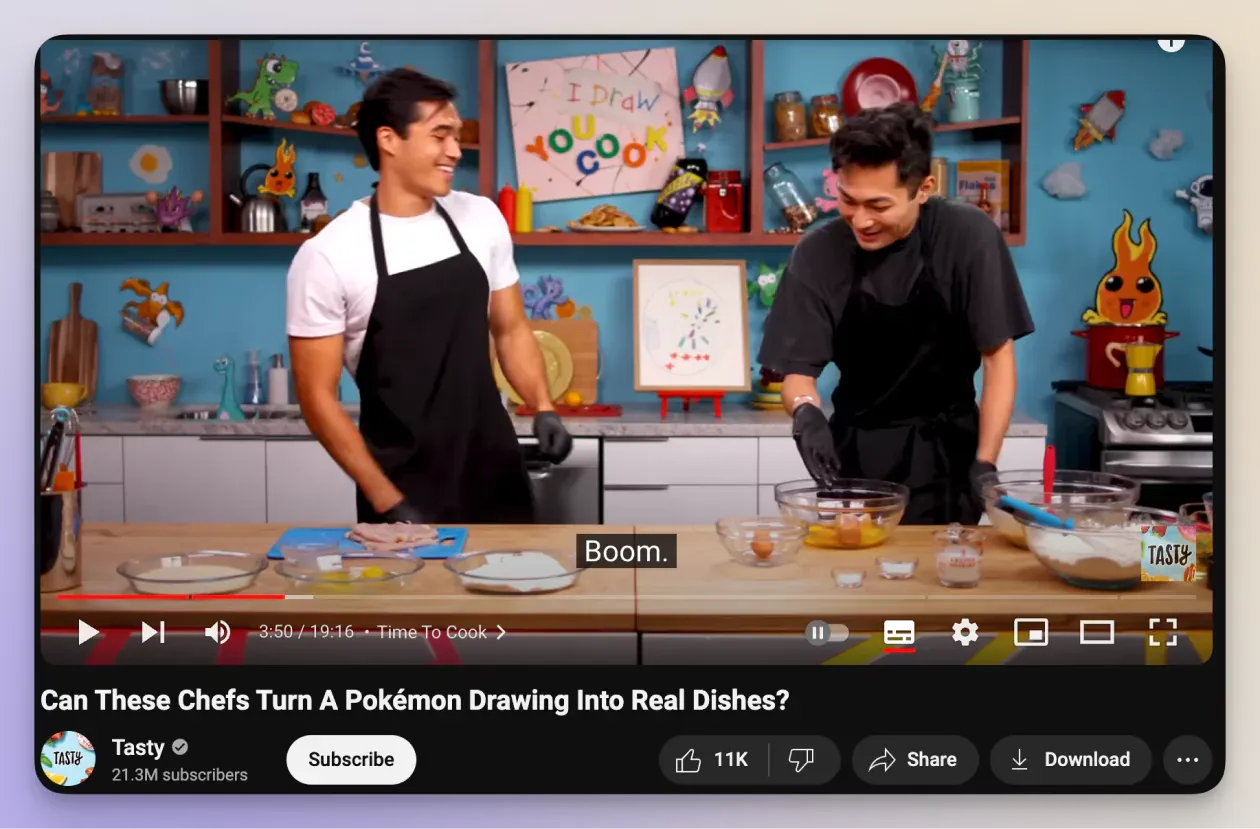
10. Shared URL/links to website content
Sometimes, you need to give your audience more details than what the social media platform can offer. Maybe you want them to learn more about your event, or access the details page for a new product, or maybe you want them to get to know the team better.
Regardless of the objective, sharing URLs on your social media to your website is guaranteed to increase your website traffic and even conversions.
The most link-friendly social media platforms are Facebook, LinkedIn, Twitter, and Pinterest, although Instagram is also great for link in bio and link in stories sharing.
Here’s how Mitsubishi Electric draws its audience closer to what happens behind the scenes of industrial robot design.
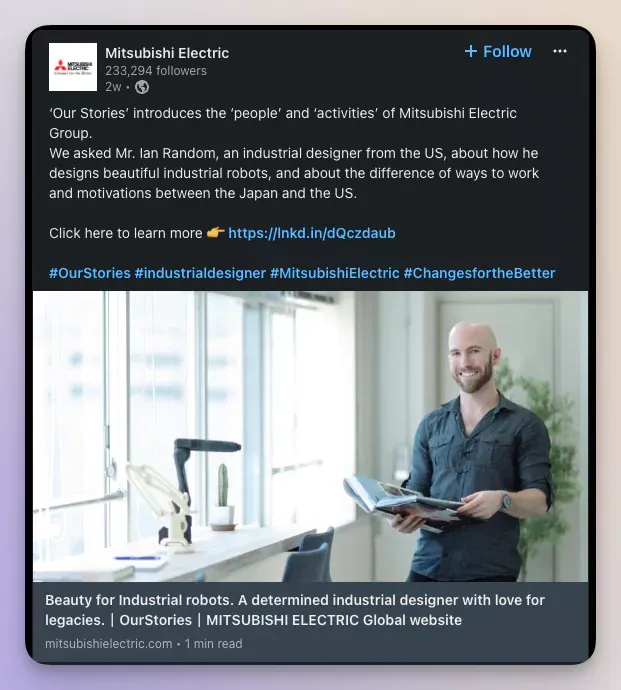
11. Influencer collabs
If it were to take all the social media post types, we could say influencer collaborations have a category of their own. This type of social media content stands at the intersection of brand values and influencer creativity.
Working with an influencer can give other perspectives to your campaign, and access new audiences. The trick here is to find the right influencer for your brand.
This is why influencer identification is a crucial step in any content social media marketing.
A great example of successful influencer collaboration is how Uber re-created the viral scene in the Beckam’s documentary to promote their Uber eats services. Clever and spicy.
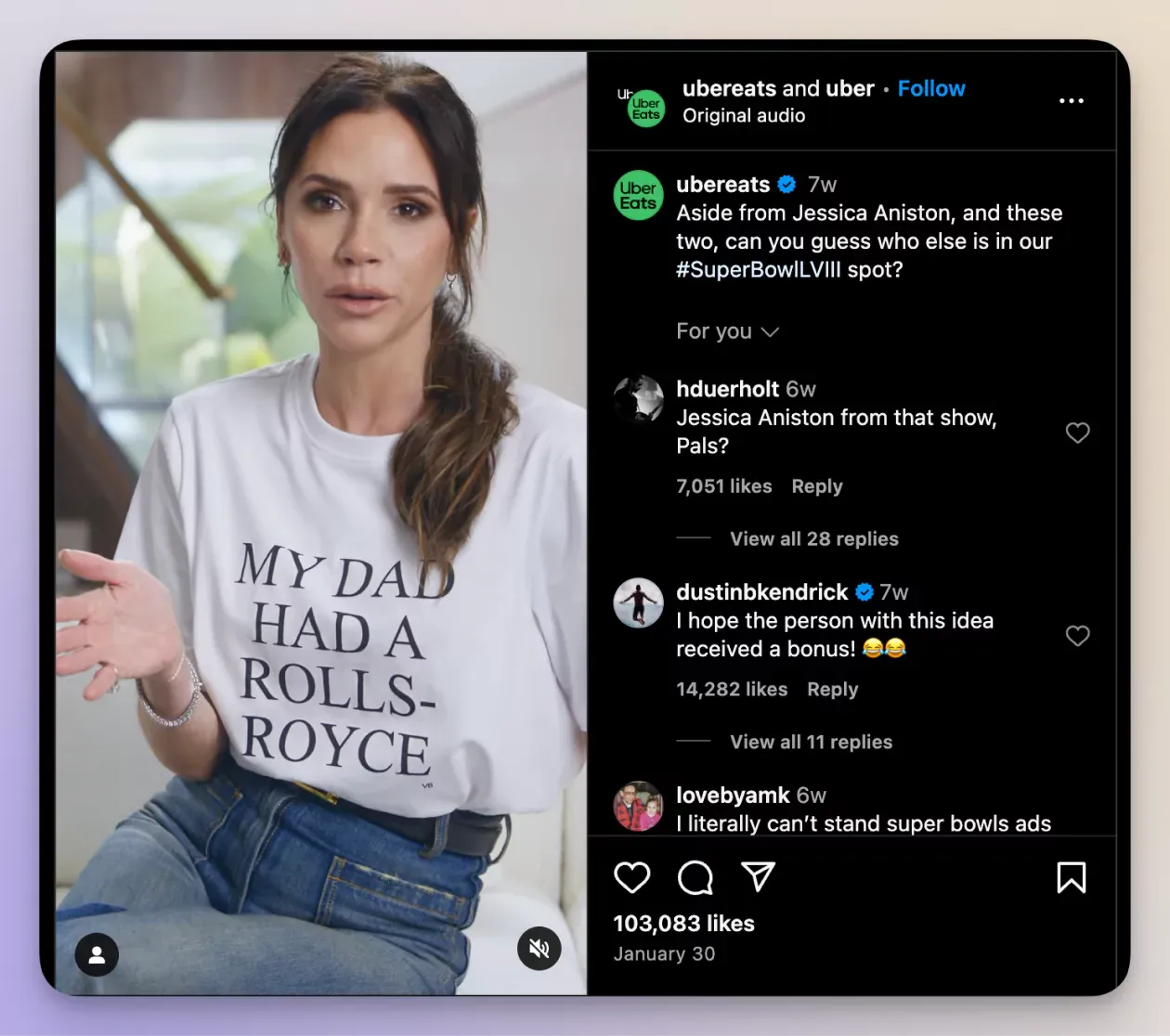
12. Infographics
Infographics are visual representations of data or information. This type of social media content uses text, images, charts, and graphics to simplify and improve understanding of the topic.
Infographics are a great way to capture attention, prove expertise and hook audiences into reading more, on external sources, such as blogs, or landing pages.
Which is exactly what Semrush is doing with their Twitter post.
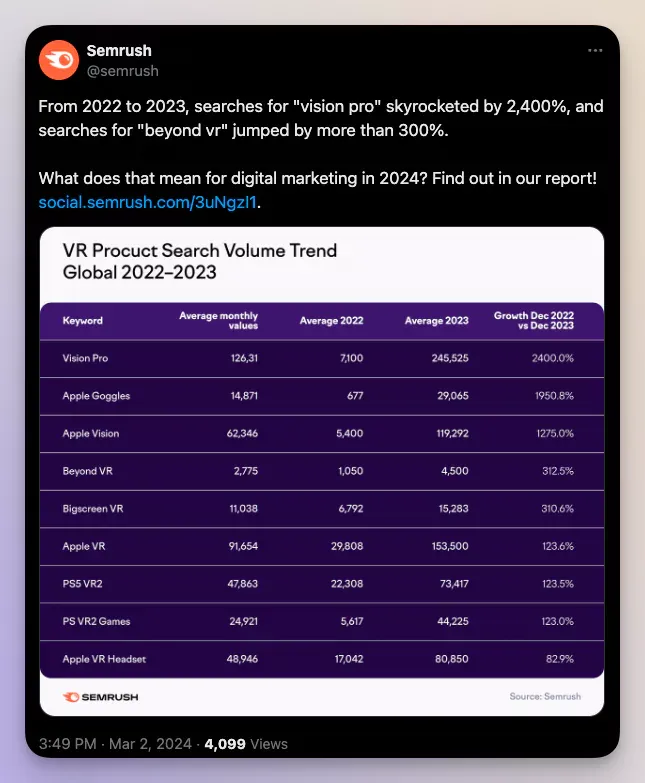
13. Polls
Polls, surveys, question boxes, quizzes, could be considered one of the most engaging content in social media.
If done right, audience participation is guaranteed. And besides getting the algorithm on your side, you can actually draw extremely valuable data out of these types of social posts.
Take a look at how this Hubspot post on Linkedin is acting like a true survey-taking pro.
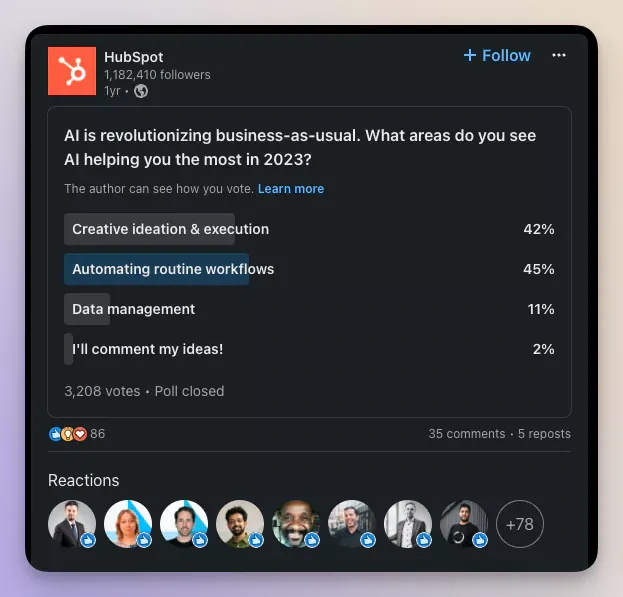
So, next time you are wondering what your audience deems as good social media content, create a pool or add a question box to your story, and let the audience tell you what they prefer.
14. Podcasts
Podcasts are not only fun and engaging but also data-savvy and educational. Not only that, but podcasts are long-form content that can be turned into other different types of social media content.
For example, you can use a podcast to create an entire blog, reels, quotes, or even audio snippets. The key is to be creative and stay on brand.
Here’s a social media podcast example called The Life of a Social Media Manager Podcast by Socialinsider. The podcast takes a closer look behind the scenes into the life of people who work in social media, talking about their daily problems and solutions.

15. Customer testimonials
Testimonials are the social media’s form of official recommendations. If this is not in your social media strategy yet, you should open a Google Docs ASAP and start asking for testimonials.
Customer testimonials can be easily turned into social media posts - either image or video, using quotes or excerpts from the original testimonial.
Customer testimonials can be used to build trust through social proof for clients but also to assist employer branding.
Check out how Databox created a visually rich, trustworthy interview-type post on LinkedIn, where they show their employees talking about the company culture and the benefits of working at together.
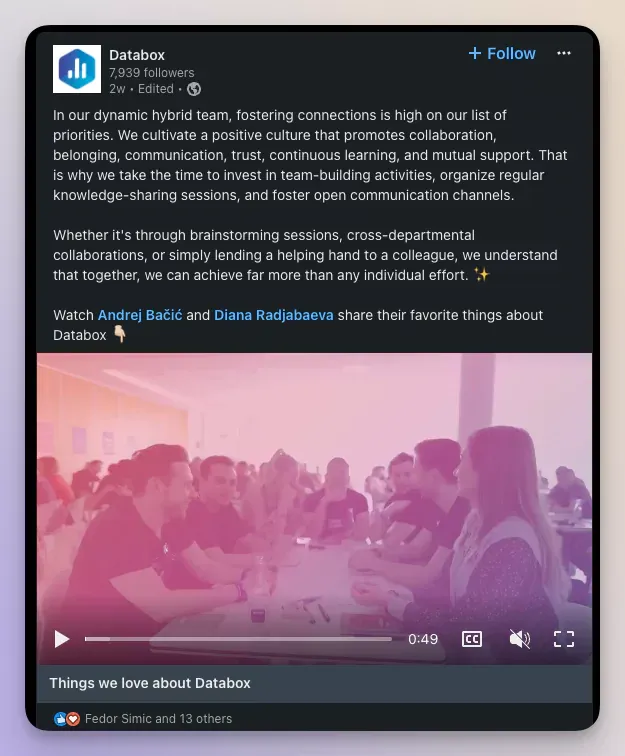
16. Guides
Guides are at the convergence of two different types of content for social media. Specifically infographics and carousels.
Moreover, social media guides are usually rooted in web article guides. Imagine transforming an in-depth educational guide into suitable content for social media marketing.
A great example is Jasper’s LinkedIn post titled “A CMO's Guide to Responsible & Results-Driven AI”. Due to its document format, the post acts as a teaser guide to the original article on their website.
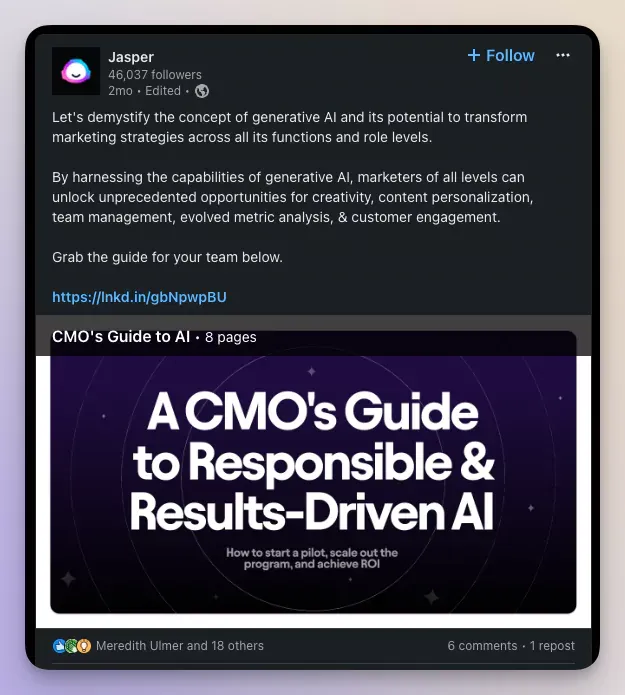
17. Industry research & findings
Sharing insights you have on your industry ads value not only to your clients but to all stakeholders. This is one of the best content types of social media for business, due to its ability to establish authority, foster trust, and encourage engagement.
Industry research and findings offer businesses a platform to demonstrate their expertise and insights into market trends, technological advancements, or consumer behavior.
By sharing such valuable information, companies can position themselves as thought leaders, making their brand more appealing to potential customers, partners, and investors.
This type of social media content encourages dialogue and interaction among the audience, increasing brand visibility and reinforcing customer loyalty.
Here is an example of how sharing key findings, Socialinsider is contributing to their field's growth and ultimately to their own long-term success.
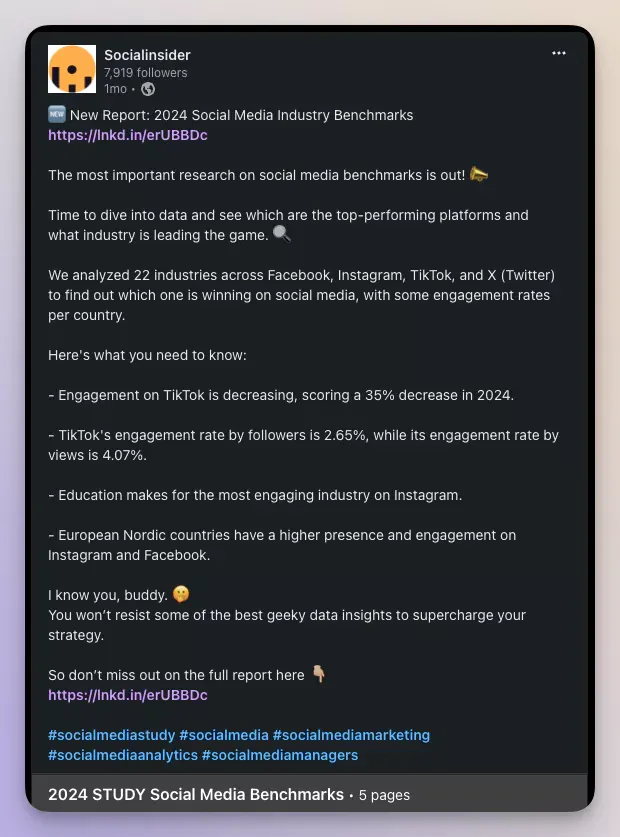
18. Giveaways and contests
What better way to show some appreciation and drive some engagement at the same time, than organizing a giveaway or a contest?
All you need is to align your giveaway plans with your campaign strategy, be clear and concise with your terms and conditions, and of course, offer something of value to your audience.
Booking.com did a great job with their contest on TikTok, by pairing up with comedy actor Melissa McCarthy for their #shareyouranywhere campaign.
@bookingcom Grab your chance to win $10,000 in travel credits and go somewhere, anywhere! Follow @bookingcom and share your dream destination in the comments using #ShareYourAnywhere and Sweepstakes. Hit the link in bio for the official rules.
♬ original sound - Booking.com
How to find what content types drive engagement for your audience
With so many content types for social media to choose from, it is hard to figure out what works for your brand, without some trial and error.
But if you want to find what content types drive engagement for your audience, based on real data, consider using a social media analytics platform like Socialinsider to compare your brand’s relevant social media metrics, across all social media platforms.
The technique consists of tagging and grouping social media posts by content pillars and keywords.
Here’s how to do it in 5 simple steps:
- Step 1: Start by conducting a cross-channel analysis to compare social media platforms
Add all the social media profiles for your brand.
I’ll use Canva for example.
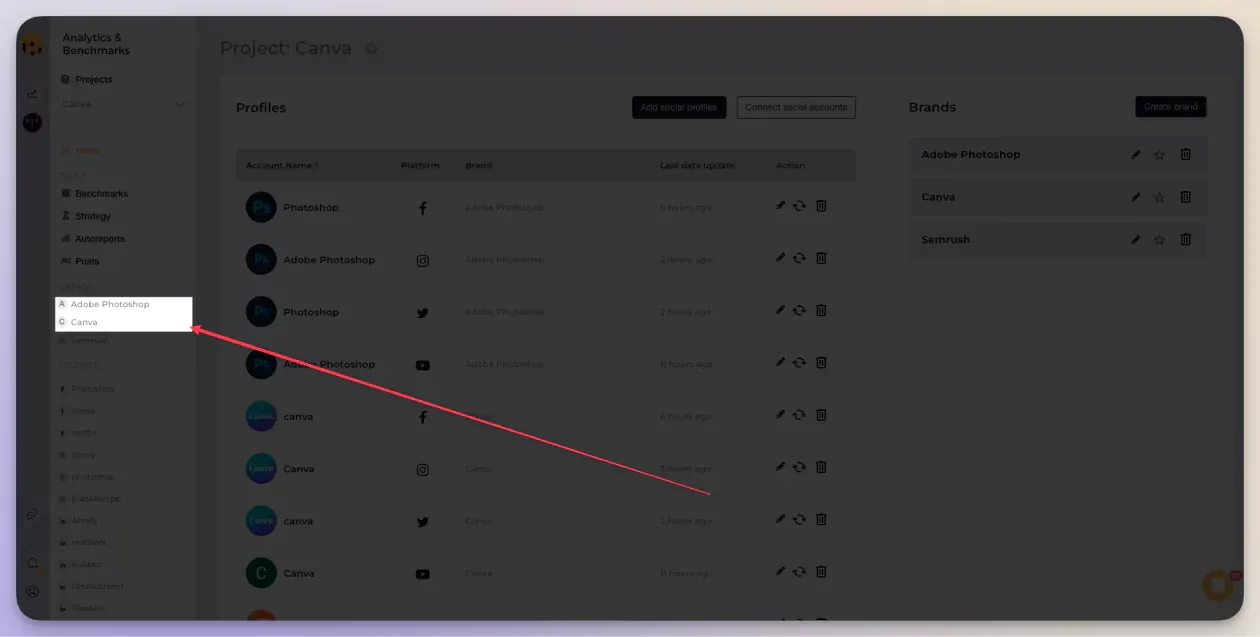
- Step 2: Select ‘Posts’ from the sidebar and search through posts by content pillars, keywords, or hashtags.
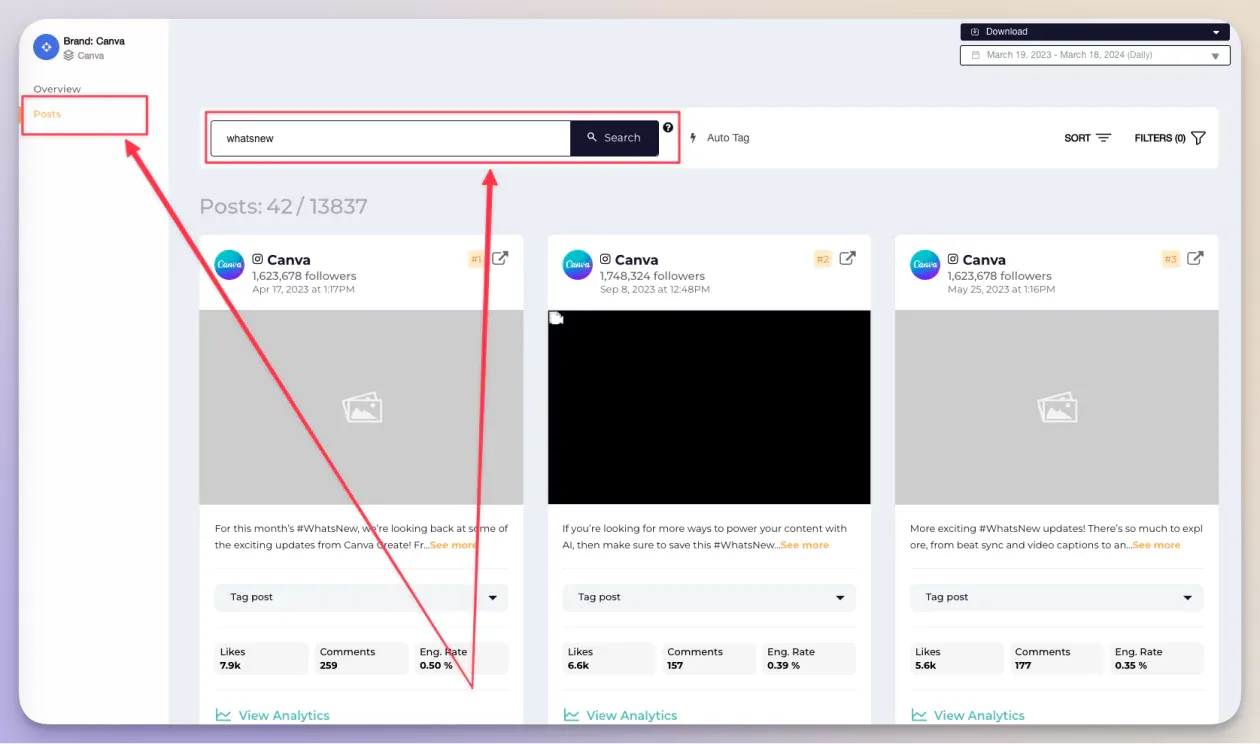
- Step 3: Click on Auto Tag to tag and group social media posts.
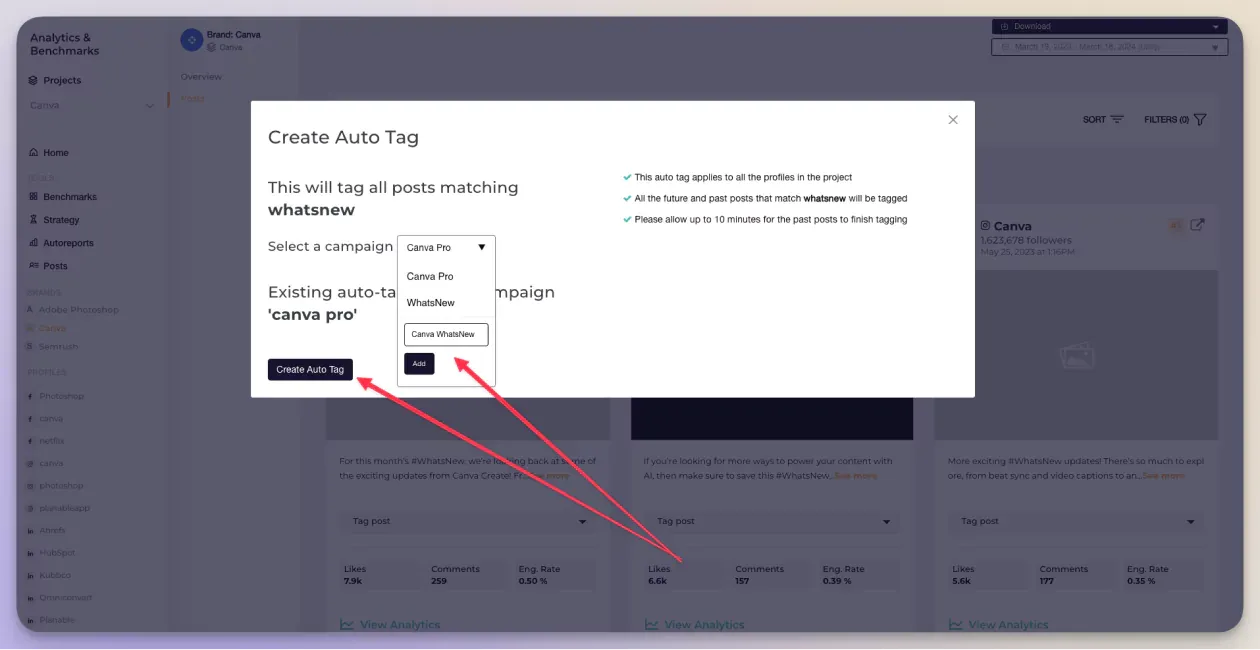
- Step 4: Analyze content pillars to understand which one drives more engagement for your brand.
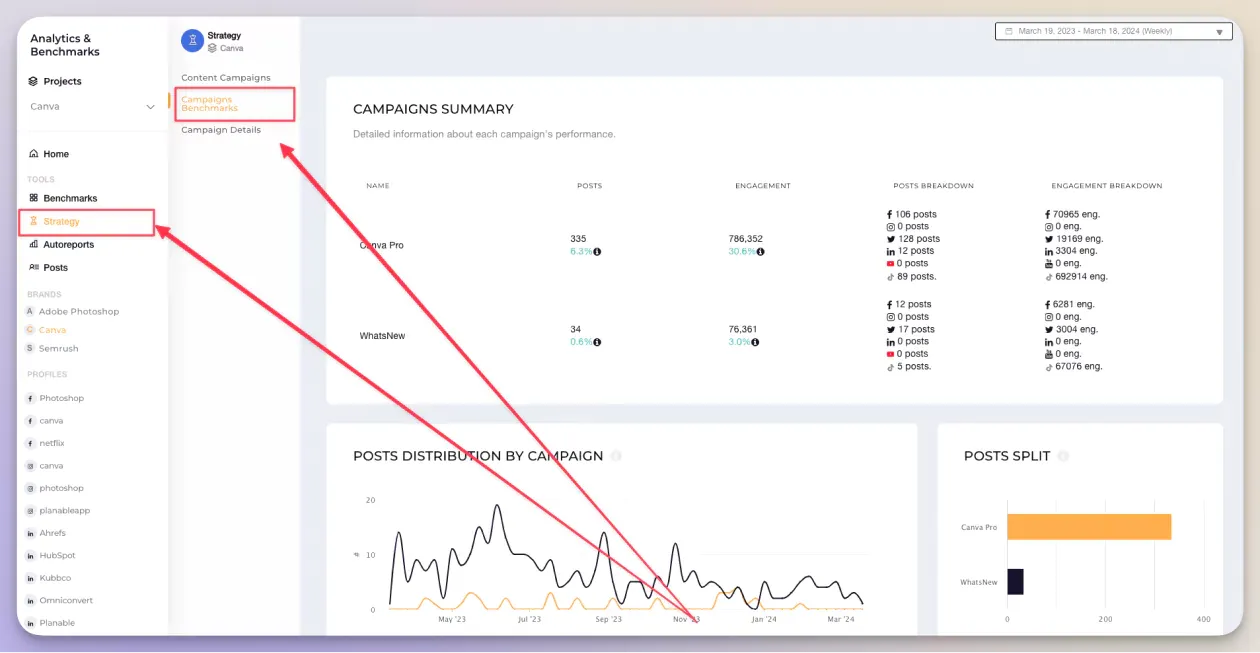
- Step 5: Analyze audience engagement with each content pillar to identify where the audience is most engaged.
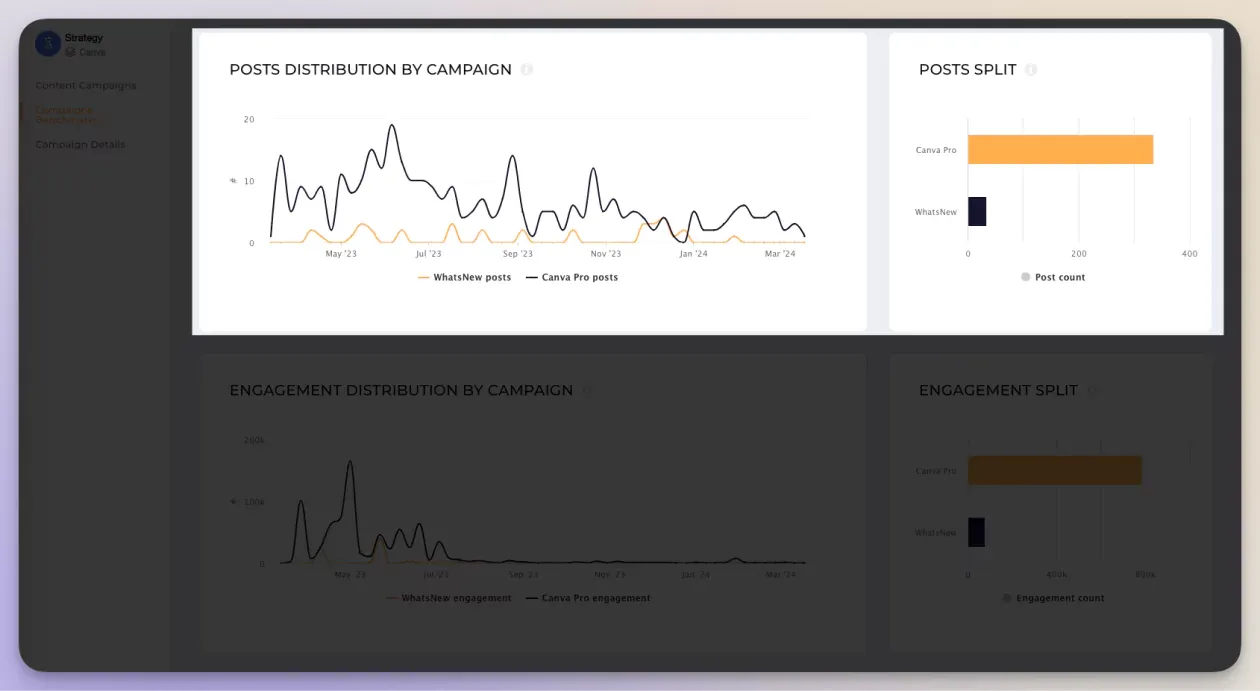
Additionally, you can research data and social media industry trend reports to shape your marketing strategy and make informed decisions.
Final thoughts
With so many social media content categories to choose from, you are ready to tackle your brand’s monthly posting calendar.
But are you ready to strategically create an insights-based plan?
Now get up and get busy analyzing those essential social media analytics to skyrocket your next marketing campaign.







